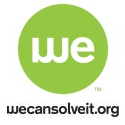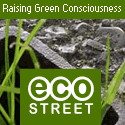Seattle takes a look at the question "Paper or Plastic?" and comes up with a proposal that Seattle city officials hope will dramatically reduce plastic and paper bag waste within the city.
More about Headline: Earth
Katie Fehlinger hosts Headline: Earth, which takes an unbiased look at all sides of the global warming debate. Headline: Earth is a video podcast with features, interviews and commentary on current global warming issues.
Monday, July 28, 2008
Thursday, July 24, 2008
Paper or Plastic? The Answer is Neither
TreeHugger Blog took a look at the age old question Paper Bags or Plastic Bags? Everything You Need to Know.
Bottom Line from their Research
 Ultimately, neither paper nor plastic bags are the best choice; we think choosing reusable canvas bags instead is the way to go.
Ultimately, neither paper nor plastic bags are the best choice; we think choosing reusable canvas bags instead is the way to go.
Grab a Reusable My Green Sac Bag and go the next time you go shopping. Try our double sided My Green Sac from Cafe Press, or one of our collection of choices on Zazzle.
Collin Dunn. July 9, 2008. Paper Bags or Plastic Bags? Everything You Need to Know. TreeHugger.com
Australian Government. December 2002. Plastic Shopping Bags – Analysis of Levies and Environmental Impacts. Department of the Environment, Water, Heritage and the Arts.
Paper bags or plastic bags
Both paper and plastic bags require
- Lots and lots of resources
- Lots and lots of energy
- Proper recycling
Bottom Line from their Research
From an energy standpoint, according to this Australian study,
- Reusable Canvas bags are 14 times better than plastic bags
- Reusable Canvas bags 39 times better than paper bags
Grab a Reusable My Green Sac Bag and go the next time you go shopping. Try our double sided My Green Sac from Cafe Press, or one of our collection of choices on Zazzle.
Collin Dunn. July 9, 2008. Paper Bags or Plastic Bags? Everything You Need to Know. TreeHugger.com
Australian Government. December 2002. Plastic Shopping Bags – Analysis of Levies and Environmental Impacts. Department of the Environment, Water, Heritage and the Arts.
Monday, July 21, 2008
10 Everyday Ways to Contribute to a Healthier Planet
 Ten tips on everyday way you can go green taken from the book True Green: 100 Everyday Ways you Can Contribute to a Healthier Planet
Ten tips on everyday way you can go green taken from the book True Green: 100 Everyday Ways you Can Contribute to a Healthier Planet- Power Shower - Try and limit your time in the shower to 5 minutes.
- Run the dishwasher only when it is full or reduce water even more by washing them by hand (without the water running).
- Use a solar clothes dryer, or a clothesline instead of the clothes dryer.
- Stick to the old-fashioned way of clearing the driveway or leaves, using brooms and rakes.
- Grow your own vegetables in a kitchen garden.
- Get a mug instead of using disposable cups at work.
- Print documents on both sides of the paper to cut down on paper use.
- Turn off the lights when they are not in use.
- Log out of the computer and shut it down when not in use.
- Before you make any purchase, ask yourself if you really need it. Remember that less is really more.
Labels:
conservation,
Ecofriendly,
go green,
green tips,
healthy planet,
Live Green,
reducing
Friday, July 18, 2008
Al Gore Challenges the Nation
In his speech on Thursday July 18, 2008 Former Vice President Al Gore called for a “man on the moon” approach to the solving the problem of global warming. He challenged the nation to take bold steps towards solving the climate crisis.
You can view excerpts from his speech from We Can Solve It on YouTube:
You can also find out more information on two Squidoo Lenses that I have created one for the We Can Solve It Campaign and the other to honor Al Gore and the work he is doing.
You can view excerpts from his speech from We Can Solve It on YouTube:
You can also find out more information on two Squidoo Lenses that I have created one for the We Can Solve It Campaign and the other to honor Al Gore and the work he is doing.
Thursday, July 3, 2008
Green Visiting - The Monterey Bay Aquarium
 In June we took the girls to one of their favorite places to visit, the Monterey Bay Aquarium. Not only is the Aquarium a fun place to visit, it is a great way to teach children first hand about nature, the sea, sea life and the environment.
In June we took the girls to one of their favorite places to visit, the Monterey Bay Aquarium. Not only is the Aquarium a fun place to visit, it is a great way to teach children first hand about nature, the sea, sea life and the environment.A visit to the aquarium is also a great way to teach them be more nature aware and develop a concern for the environment and for animals.
My daughters never seem to tire of visiting all of the different exhibits. This year they were finally old enough to sit through several of their educational programs, All about Otters, The Deep and another about the Jellies.
 The Aquarium offers a variety of different programs that are fun, entertaining and educational teaching about the many different inhabitants of the aquarium and the deep ocean.
The Aquarium offers a variety of different programs that are fun, entertaining and educational teaching about the many different inhabitants of the aquarium and the deep ocean.The Monterey Bay Aquarium also hosts a variety of different hands on programs are available for children and adults to experience the aquarium creatures up close and personal like getting to touch a sea anemone or a crab.
Conservation Message
The mission of the Monterey Bay Aquarium is to "Inspire Conservation of the Oceans.
In addition to inspiring conservation of the oceans, the Aquarium is deeply committed to minimizing their environmental impact and to conducting business operations in ways that reflect and advance their conservation mission.
Staff members are encouraged to carpool, bike or ride the bus to work. The Aquarium only uses recycled paper for printing and photocopying.
Visitors are encouraged to minimize the use of water and paper products when using the restrooms, to dine on sustainable seafood resources and eat from recyclable containers. This simple conservation messages is displayed on every paper towel dispenser in the restrooms:
Paper Towels = Trees
Which makes you think twice about grabbing that second paper towel.
Learning Resources
The Monterey Bay Aquarium is a living learning institution. In addition to offering resources for those who can make it to the Aquarium they also offer online information and educational newsletters for teachers who may not be able to easily travel with their classes to Monterey.
You can learn more about the Monterey Bay Aquarium as a Teaching Resource or just get a glimpse at many of the different exhibits, more information and at least a virtual trip at the Monterey Bay Aquarium lens if it is too far to travel.
Image Source: Josh Berglund. Tropical Menagerie. Creative Commons License. Some Rights Reserved.
Subscribe to:
Comments (Atom)




























 © 2008 Kirsti A. Dyer MD, MS, CWS. Some rights reserved.
© 2008 Kirsti A. Dyer MD, MS, CWS. Some rights reserved.